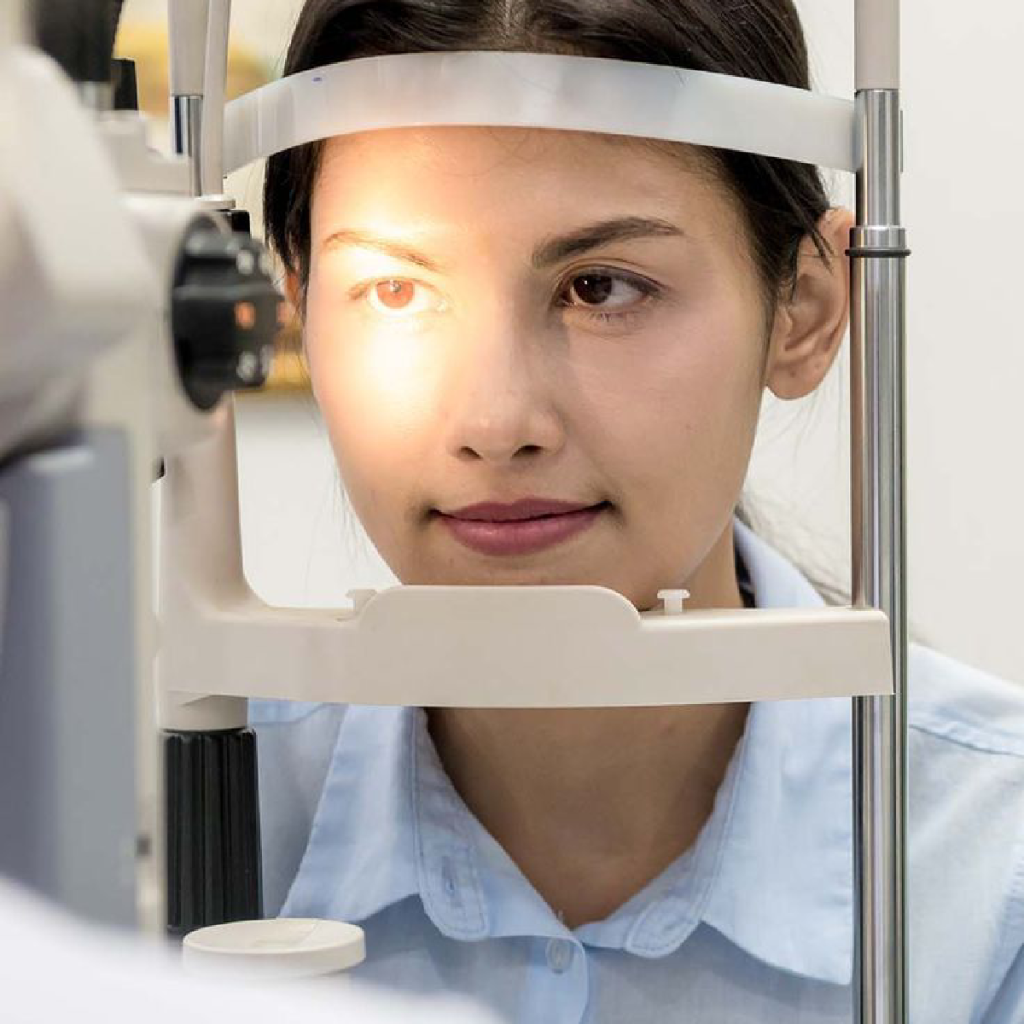Discover what presbyopia is and learn about the various treatment options available.
What Is Presbyopia and How Is It Treated?
Presbyopia is a common eye condition that affects many people as they reach their mid-40s and beyond. If you find yourself squinting to read text up close or struggling to focus on objects at a distance, you might be experiencing the joys of presbyopia. But fret not, my friend! In this article, we’ll dive into the wonderful world of presbyopia and explore the various treatment options available to restore your visual clarity.

Understanding Presbyopia
Let’s start by understanding the ins and outs of presbyopia. This age-related condition occurs when the lens of the eye loses its elasticity, making it harder to focus on objects up close. Blame it on the passage of time, my fellow adventurers! As we age, the lens becomes less flexible, leaving us with a new set of challenges when it comes to near vision.
But fear not! There’s a whole science behind presbyopia to explain this phenomenon.
Presbyopia is caused by a gradual thickening and hardening of the lens, which alters its ability to change shape. You see, when we’re young, the lens is like a chameleon, adapting its shape effortlessly to bring objects into focus. However, with the onset of presbyopia, our once agile lens loses its elasticity, resulting in difficulties with close-up tasks.
Isn’t it fascinating how our bodies change over time? Embrace the quirks, my friends!
Now that we’re acquainted with the science behind presbyopia, it’s time to explore its telltale signs. Keep an eye out for these common symptoms:
- Blurry vision when reading or working on close-up tasks
- Straining your eyes or feeling fatigued after extended periods of near vision work
- Headaches or eye discomfort after focusing on nearby objects for too long
- The desperate need to hold reading material at arm’s length to see it clearly (we’ve all been there!)
If any of these sound familiar, congratulations! You’ve joined the presbyopia party.
Wondering why presbyopia happens to the best of us? Well, my friend, aging is the primary culprit in this game. As we grow older, the muscle fibers around the lens lose their elasticity, causing the lens to become rigid and less able to change shape. It’s simply a natural part of the aging process.
However, some other factors can exacerbate presbyopia, such as diabetes, certain medications, and eye trauma. It’s always wise to consult with an eye care professional to rule out any underlying issues.
Now, let’s dive a little deeper into the science behind presbyopia. Did you know that the lens of the eye is made up of layers of protein fibers? These fibers are arranged in a precise pattern that allows the lens to change shape and focus light onto the retina. As we age, these protein fibers start to accumulate and become less flexible, causing the lens to lose its ability to change shape effectively.
Another interesting aspect of presbyopia is that it affects everyone to some degree. It’s a natural part of the aging process and usually becomes noticeable around the age of 40. However, the rate at which presbyopia progresses can vary from person to person. Some individuals may experience a gradual decline in near vision, while others may notice a more sudden onset of symptoms.
When it comes to managing presbyopia, there are several options available. One common solution is the use of reading glasses or bifocals, which help to compensate for the loss of near vision. These glasses have different prescription strengths in the upper and lower parts of the lenses, allowing for clear vision at both near and far distances.
Another option is the use of contact lenses specifically designed for presbyopia. These multifocal lenses have different zones that correct for near, intermediate, and distance vision. They can be a convenient alternative for those who prefer not to wear glasses.
In recent years, there have also been advancements in surgical procedures to treat presbyopia. One such procedure is called monovision, where one eye is corrected for distance vision and the other for near vision. This technique allows the brain to adapt and use the appropriate eye for different tasks. Another surgical option is the implantation of multifocal intraocular lenses, which can provide clear vision at multiple distances.
So, my fellow adventurers, while presbyopia may be an inevitable part of getting older, there are plenty of options available to help us navigate through the challenges of near vision. Whether it’s through the use of glasses, contact lenses, or surgical interventions, we can continue to enjoy the wonders of the world up close, even as time marches on.
Diagnosis of Presbyopia
Now that we’ve fully dived into the world of presbyopia, let’s take a closer look at how it’s diagnosed. The first step is visiting an eye care specialist for a comprehensive eye examination.
When you arrive at the eye care specialist’s office, you’ll be greeted by a friendly receptionist who will guide you through the process. The specialist will then take you to an examination room, where the magic happens.
Eye Examination Procedures
During your eye examination, the eye care professional will evaluate your vision and assess the health of your eyes. They’ll likely perform a range of tests to gather all the necessary information.
The first test is the visual acuity test, where you’ll be asked to read letters on a chart placed at various distances. This test helps determine how well you see at different ranges and gives the specialist an initial understanding of your visual capabilities.
Next, the specialist will conduct a retinal examination. This involves using a special instrument called an ophthalmoscope to examine the health of the back of your eyes. They will carefully look for any signs of damage or abnormalities that may be contributing to your presbyopia.
After the retinal examination, you’ll undergo a refraction test. This test helps the specialist determine the specific prescription you may need for your vision. You’ll be asked to look through a series of lenses while reading letters or viewing images. The specialist will fine-tune the lenses until they find the combination that gives you the clearest vision.
Lastly, the tonometry test will be performed to measure your eye pressure. This test is painless and involves a gentle puff of air directed at your eye. It helps the specialist check for any signs of increased eye pressure, which could indicate other eye conditions.
Remember, friends, these tests are painless and essential to gaining a clearer picture of your eye health. The eye care specialist will explain each step of the process and answer any questions you may have along the way.
Importance of Early Detection
Early detection of presbyopia is crucial in managing the condition effectively. When you notice symptoms such as difficulty reading small print or experiencing eyestrain, don’t delay seeking professional help. The sooner you address presbyopia, the sooner you can embark on a journey towards visual bliss!
By detecting presbyopia early, the eye care specialist can develop a personalized treatment plan tailored to your specific needs. This may include prescription eyeglasses or contact lenses designed to correct your near vision. Additionally, the specialist may provide advice on lifestyle changes and eye exercises that can help alleviate the symptoms of presbyopia.
Remember, you don’t have to navigate the world of presbyopia alone. The eye care specialist is there to guide you every step of the way, ensuring that you have the best possible vision for all of life’s adventures.
Treatment Options for Presbyopia
So, what are your options for combating presbyopia? Let’s explore the wonderful world of treatment possibilities together!
Corrective Eyewear for Presbyopia
When it comes to treating presbyopia, good ol’ corrective eyewear often takes center stage. Options include:
- Reading glasses for those moments when you need a little boost for close-up tasks
- Bifocal or multifocal glasses that correct both near and distance vision
- Progressive lenses that offer a seamless transition between different powers
With the right pair of glasses, you’ll be seeing the world through stylish frames in no time!
Surgical Procedures for Presbyopia
If you’re looking for a more permanent solution, surgical procedures can come to the rescue! Consider these options:
- Refractive lens exchange, where the natural lens is replaced with an artificial intraocular lens
- Corneal inlays, which involve implanting a tiny lens into the cornea to improve near vision
Talk to an eye surgeon to determine if these procedures are right for you. Adventure awaits!
Emerging Treatments and Research
The world of eye care is constantly evolving, and researchers are always on the lookout for innovative treatments. Keep an eye out for exciting developments, such as:
- Presbyopia-correcting eye drops (yes, you heard that right!)
- Laser procedures that reshape the cornea for improved near vision
- Implantable lenses that provide a customized solution for individual visual needs
Stay curious, my friends, and watch as the future unfolds before your eyes!
Living with Presbyopia
Presbyopia may be a part of your life now, but fear not! With a few lifestyle adjustments and some clever coping mechanisms, you can thrive despite this age-old challenge.
Lifestyle Adjustments for Presbyopia Patients
Here are some tips to help you navigate the presbyopia adventure:
- Optimize your lighting to reduce eyestrain and improve visibility
- Enlarge the font size on your digital devices to make reading a breeze
- Take regular breaks to rest your eyes during close-up tasks
- Make use of technology, such as voice-to-text software or magnification apps
By adapting your lifestyle, you can conquer presbyopia like a true champion!
Coping Mechanisms and Support
Remember, my friend, you’re not alone in this journey. Seek support from loved ones, join presbyopia support groups, and embrace the wisdom of those who have already triumphed over this condition. Together, we can navigate the world of near vision challenges with grace and a sense of humor!
Prevention and Maintenance
While presbyopia is a natural part of aging, there are steps you can take to promote eye health and preserve your vision for years to come.

Eye Health and Regular Check-ups
Routine eye examinations are key to detecting eye conditions early and addressing them promptly. Remember to schedule regular visits with your eye care professional and follow their recommendations for maintaining good eye health. Your peepers will thank you!
Diet and Exercise for Eye Health
Eating a balanced diet rich in fruits, vegetables, and omega-3 fatty acids can support overall eye health. Additionally, regular exercise improves blood circulation, which benefits your eyes. So, grab your sneakers and hit the trails as you celebrate the wonders of a healthy lifestyle!
Final Thoughts
And there you have it, my fellow adventurers! Presbyopia may be a curious and inevitable part of life, but with the right knowledge and a positive mindset, you can embrace the challenges and conquer them with ease. Remember, your journey to clarity begins with a visit to your eye care professional. So, let’s raise our glasses (reading or otherwise) to a future filled with sharp vision and endless possibilities!







Your article helped me a lot, is there any more related content? Thanks!
Your article helped me a lot, is there any more related content? Thanks!